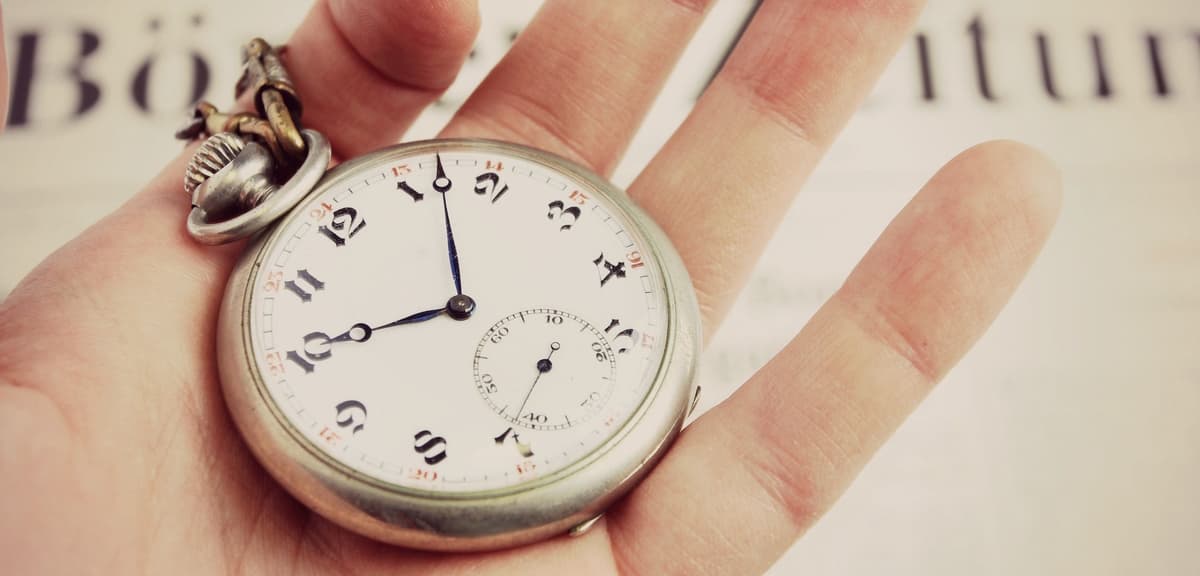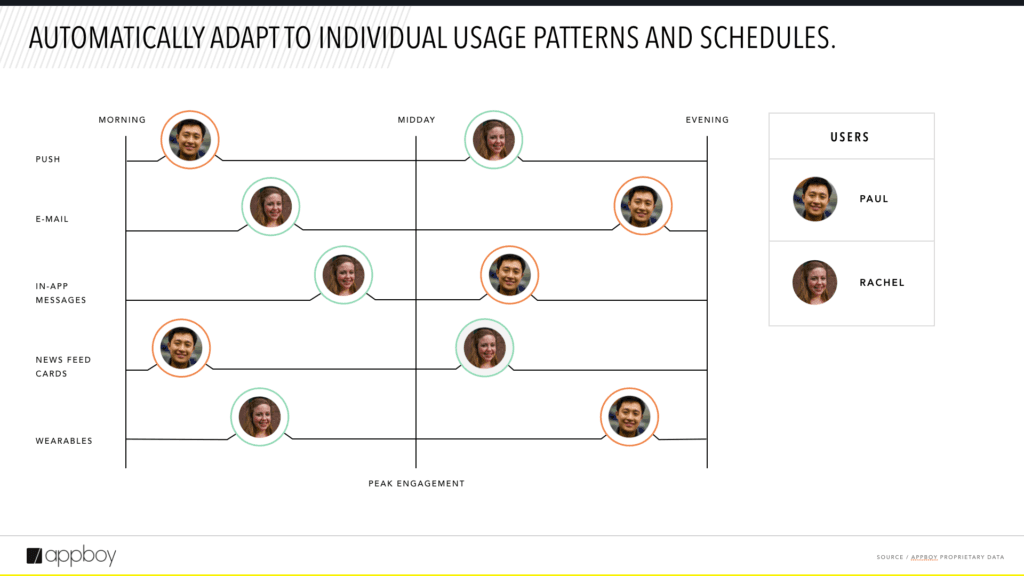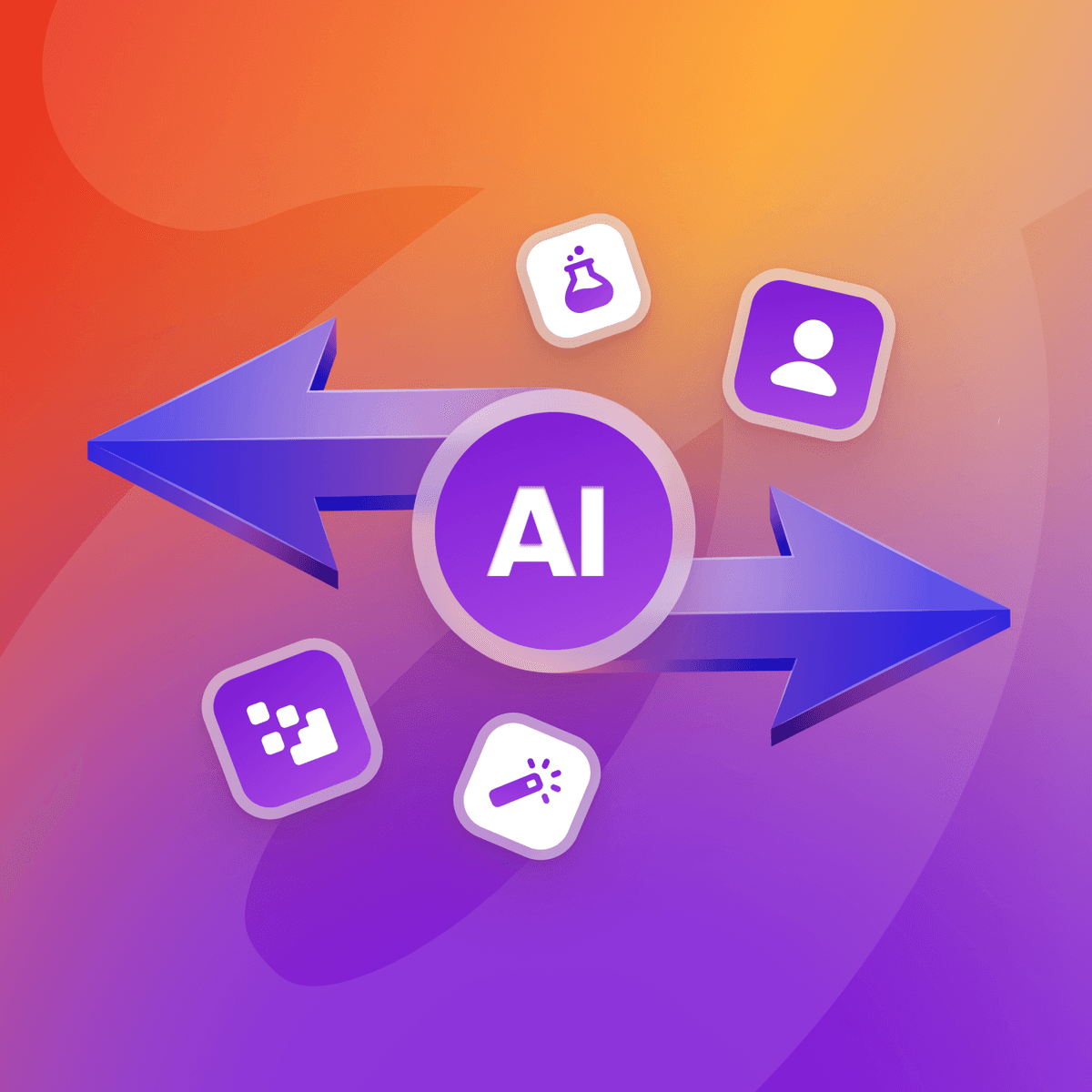Marketers, Stop Agonizing Over When to Send That Message
Published on May 27, 2016/Last edited on May 27, 2016/6 min read


Todd Grennan
Content Production Principal, Content Marketing at BrazeToday’s consumer receives a lot of messages from brands. Transactional notifications letting them know that their sofa has been delivered or that they’ve hit their credit limit. Promotional outreach highlighting new coupons and upcoming sales. Commercial messages encouraging them to invite friends to use that brand’s app or to share a recent high score on social media. And a lot more besides.
Marketers have more messaging channels to reach customers than ever before (both on mobile and increasingly on the web). But a bigger driver of this messaging glut is the sheer number of brands looking to reach and engage customers. People have an average of 119 apps on their smartphones and visit 96 web domains a month, making it possible for a large number of (sometimes competing) brands to reach them via push notifications, email, and more.
Personalization can be a powerful way for brands to make their message stand out from the pack and make them more likely to result in customer engagement. In fact, research done by Appboy has found that personalizing messages increases conversions by more than 27%. But it’s possible to build on those results by taking advantage of send-time optimization, a unique form of personalization that many marketers may not know about.
What is send-time optimization?
At its core, personalization is about using customer data to provide your users with a better, more intuitive, more relevant, and more valuable brand experience. With send-time optimization, marketers can take advantage of an underappreciated type of customer data—namely when customers received past messages from your brand and whether or not they engaged—and use it to individually customize the delivery times of future outreach.

That may sound a little complex. But send-time optimization ultimately isn’t that different from other, better-known forms of personalization. With name-based personalization, for instance, brands collect customer names during account creation or through other channels, then automatically include each user’s name in the messages they send using this kind of personalization.
Send-time optimization works the same way. But instead of automatically inserting the message recipient’s name into a push notification or email, marketers are ensuring that the message they send arrives during each user’s personal high-engagement window. That might be 7:00 a.m. during a customer’s morning commute, or at 7:00 p.m. while she’s having drinks with friends. And that time could be different for every single one of your users.
What are the benefits of send-time optimization?
There are a number of things that make send-time optimization such an effective tool for improving your customer messaging. Here are four big ones:
1. It makes your messaging feel less intrusive
For push notifications in particular, their attention-getting nature is something of a mixed blessing. It makes it possible to effectively reach customers with urgent information wherever they are and whatever they may be doing, but messages sent through this channel also have the potential to alienate recipients.
Send-time optimization can help. Instead of irritating users by sending messages while they’re sitting in a meeting or watching a movie, for example, marketers can use send-time optimization to ensure that their messages arrive at times when each customer is most open to hearing from them. That can make a huge difference—especially when you consider that 78% of consumers say that they would opt out of push notifications or uninstall the offending app completely if they receive push they’re unhappy with.
2. It makes your messaging harder to miss
When a customer doesn’t open an email you send or fails to click on a push notification, they could be ignoring your outreach—but it’s also possible that they didn’t notice it all. Crowded email in-boxes and packed notification centers are a common reality for many users, and not everyone carefully reviews all the messages they receive. That makes it particularly important to make sure that you’re delivering messages at the right time for each customer.
Imagine that you have a user who usually checks their push notifications at 9:00 a.m. on weekdays. If you send a push notification to him at 8:55 a.m., that message will likely be among his most recent notifications, significantly increasing the chances that he sees it, engages with it, and takes action. If, on the other hand, you sent that message to that user at 10:00 a.m. using traditional time-based scheduling, it could sit unread for the entirety of his workday, sliding deeper and deeper into his notification center. Maybe that user will scroll through every one of his missed push notifications and tap yours. But probably not. With send-time optimization, on the other hand, you can have confidence that when you send a message, the customer will see it.
3. It gives marketers peace of mind
Your brand decides to send a campaign highlighting an upcoming sale you’re having. So you write the email copy, find images, build the message, choose the audience segment you want to reach. Okay. But now you’ve got to decide when to send it. Right away? Early in the morning? At lunchtime? And if you have a nationwide or international user base, there’s time zones to think about, too. Send the message at the wrong time and it could fizzle, resulting in a less successful sale and a bunch of unhappy people at your company. That’s a lot of pressure.
But with send-time optimization, you don’t need to worry about any of that. On the Appboy platform, for instance, when you finish building that message and choosing its audience, all you need to do is select Intelligent Delivery, our send-time optimization tool, and—bam!—you’re ready to go. It’s one less thing to think (and worry and obsess) about.
4. It drives higher engagement
By ensuring that customers get your messages at the times when they’re most like to engage, send-time optimization can have a big positive impact on the campaigns you send. When marketers use send-time optimization they see a 25% increase in engagement. That’s a major jump in message effectiveness—and all it takes is one click.
Anything else?
Send-time personalization isn’t going to be right for every message you send. If you’re creating a New Year’s Eve–themed push notification, for example, you might be better off delivering it right at midnight on the dot, instead of the next time that customers are most likely to engage, which might well be hours into the new year. Alternately, you might be using trigger campaigns to automatically send messages to customers after they carry out a certain action on your website or in your app; since this kind of outreach is extremely time sensitive and tied to customer behavior, it’s not a natural fit for send-time optimization.
But, for most brands, these kinds of situations aren’t the rule. Most campaigns you send could be improved using send-time optimization. So maybe the question you should be asking yourself before putting together a new campaign isn’t “Should I personalize this message’s delivery time?” but, rather, “Is there any good reason I shouldn’t?”
Related Tags
Be Absolutely Engaging.™
Sign up for regular updates from Braze.
Related Content
View the Blog
When buffer management goes wrong: Avoiding bias in AI decisioning models

Kipp Johnson

How AI Decisioning Transforms Marketing (A Complete Guide)

Team Braze

AI decisioning cheat sheet: How to crawl/walk/run with BrazeAI Decisioning Studioᵀᴹ
